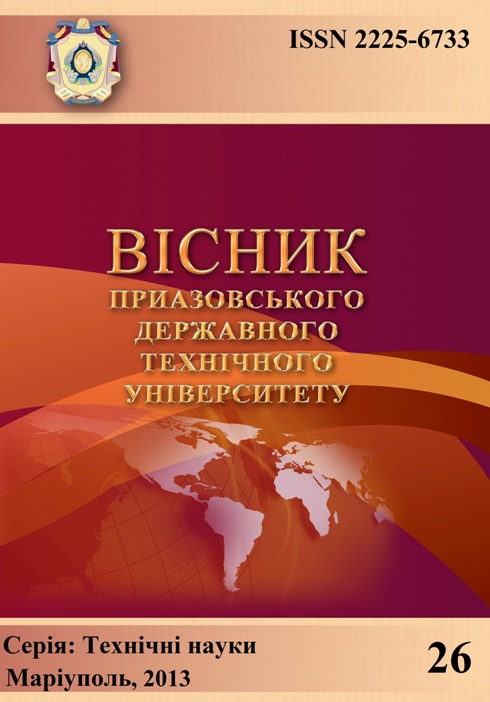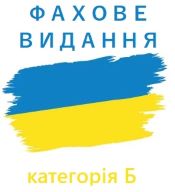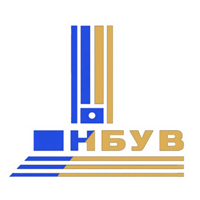Визначення дифузії миш'яку у розплаві заліза
DOI:
https://doi.org/10.31498/2225-6733.26.2013.29675Ключові слова:
миш'як, рідке залізо, дифузія, концентрація, стержень, капіляри, корундовий тигельАнотація
Розглянуто одну із проблем ефективності сталеплавильного процесу – чітке уявлення про термодинамічну природу розчинів миш'яку у рідкому залізі. На основі розробленого методу та установки дано опис розподілу концентрації діфузантів уздовж напрямку дифузії. Експериментально і розрахунковим шляхом визначено коефіцієнт дифузії миш'яку у розплаві-розчиннику, причому, було витрачено приблизно у 10 разів менше розрахункового часу, за рахунок контакту досліджуваної речовини з розплавом. Проведене порівняння даних, отриманих експериментально і розрахунковим шляхом, показало, що вони досить близькі між собою, що підтверджує достовірність розробленої методики
Посилання
Харлашин П.С. Мышьяк и его роль в металлургических процессах / П.С. Харлашин // К. : Вища школа, 1993. – 304 с.
Арсентьев П.П. Физико-химические методы исследования металлургических процессов / П.П. Арсентьев, В.В. Яковлев, М.Г. Крашенинников [и др.] // М. : Металлургия, 1988. – 511 с.
Харлашин П.С. Влияние мышьяка на свойства металлических систем и качество стали / П.С. Харлашин, М.А. Шумилов, Е.И. Якушечкин // К. : Вища школа, 1991. – 344 с.
Вигдорович В.Н. Диффузия сурьмы в жидком висмуте / В.Н. Вигдорович, Г.А. Ухлинов, Н.Ю. Долинская [и др.] // Изв. АН СССР. Металлы. – 1976. – № 5. – С. 95-97.
Винарский М.С. Математическая статистика в чёрной металлургии / М.С. Винарский, В.Т. Жадан, Ю.Е. Кулак // К. : Техніка, 1973 – 220 с.
Харлашин П.С. О некоторых кинетических особенностях испарения мышьяка из Fe – C – As расплавов при вакуумировании / П.С. Харлашин, Г.Д. Молонов // Тепло- и массообменные процессы в ваннах сталеплавильных агрегатов. – М., 1980. – С. 118-120.
##submission.downloads##
Як цитувати
Номер
Розділ
Ліцензія
Журнал "Вісник Приазовського державного технічного університету. Серія: Технічні науки" видається під ліцензією СС-BY (Ліцензія «Із зазначенням авторства»).
Дана ліцензія дозволяє поширювати, редагувати, поправляти і брати твір за основу для похідних навіть на комерційній основі із зазначенням авторства. Це найзручніша з усіх пропонованих ліцензій. Рекомендується для максимального поширення і використання неліцензійних матеріалів.
Автори, які публікуються в цьому журналі, погоджуються з наступними умовами:
1. Автори залишають за собою право на авторство своєї роботи та передають журналу право першої публікації цієї роботи на умовах ліцензії Creative Commons Attribution License, яка дозволяє іншим особам вільно розповсюджувати опубліковану роботу з обов'язковим посиланням на авторів оригінальної роботи та першу публікацію роботи в цьому журналі.
2. Автори мають право укладати самостійні додаткові угоди, які стосуються неексклюзивного поширення роботи в тому вигляді, в якому вона була опублікована цим журналом (наприклад, розміщувати роботу в електронному сховищі установи або публікувати у складі монографії), за умови збереження посилання на першу публікацію роботи в цьому журналі.









